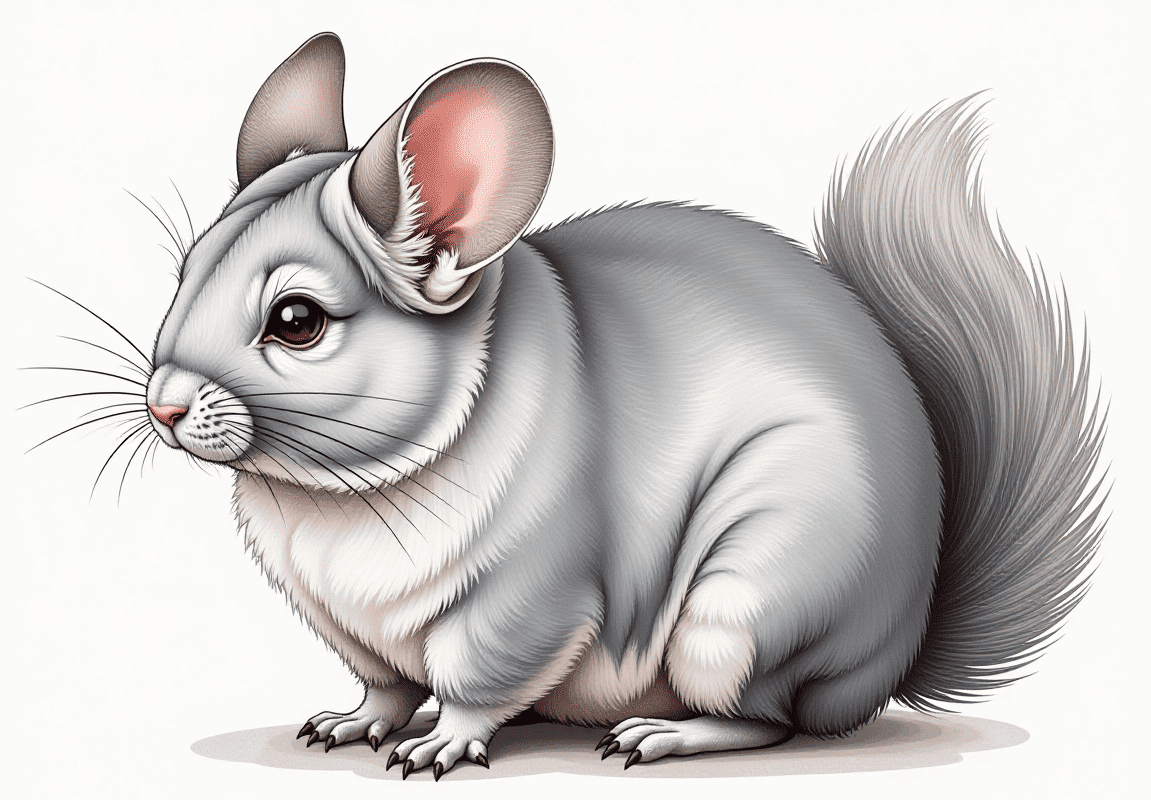Exploring Chinchilla Colors: How It Affects Health & More
Fluffy, friendly, and endlessly adorable, pet chinchillas come in a fascinating array of colors. The standard grey hue of these lovable rodents is just the beginning—once you delve deeper, the palette appears almost limitless.
If you’ve ever wondered how chinchillas display such a variety of colors, read on. We’ll uncover the science behind their coat variations and provide a detailed guide to each type. This knowledge can help you make an informed choice before adopting a chinchilla.
Understanding the Basics of Chinchilla Colors
Native to the Andes, specifically northern Chile, chinchillas have been known for centuries. Unfortunately, hunting for their luxurious fur has drastically reduced their numbers, leaving the species endangered.
There are two main types of chinchilla: short-tailed and long-tailed. Short-tailed chinchillas have fared worse, with fragmented populations across regions like Chile, Bolivia, and Argentina. Long-tailed chinchillas, however, are slightly better off, with around 5,400 individuals concentrated in two Chilean regions. Their popularity as pets has also contributed to their survival.
Selective breeding, starting in the late 19th century, introduced significant color variety to domesticated chinchillas. While wild chinchillas are primarily grey, captive ones boast over 20 color variations thanks to genetic mutations.
Genetics of Chinchilla Colors
Chinchilla coat colors are determined by dominant and recessive alleles. Dominant alleles overshadow recessive ones unless weakened or incomplete. Recessive genes only manifest in a homozygous state (two identical alleles) but can create “carrier” mutations in heterozygous states.
Some genes, like TOV (Touch of Velvet), affect patterns rather than color. The TOV gene results in darker patches on the face, back, sides, and tail. However, TOV chinchillas can’t be homozygous due to a lethal factor, making careful breeding essential.

Standard Grey: The Original Chinchilla Color
All color variations stem from the Standard Grey, the wild chinchilla’s camouflage. Any deviation in the wild would reduce survival chances. Domesticated chinchillas inherit Standard Grey genes unless dominant variants like Beige or White take precedence.
Exploring Chinchilla Color Varieties
Here are some intriguing chinchilla colors:
- Black Velvet: Predominantly black with grey side transitions. TOV genes make careful breeding essential.
- Beige: Light brown with pink ears and red-tinted eyes.
- White (Pink Eyes): Known as Beige Mosaics, with bright white fur, pink ears, and eyes.
- Mosaic: White with grey patches and darker eyes and ears.
- Violet: Dark with subtle violet tones, grey ears, and black eyes.
- Sapphire: Light grey with bluish undertones.
Caring for Different Chinchilla Colors
Chinchillas require specific conditions, regardless of color:
- Temperature & Humidity: Keep between 55-80°F and below 50% humidity to prevent heatstroke.
- Social Needs: Chinchillas are social animals that need daily interaction and shouldn’t be left alone for long.
- Enclosure: Provide a spacious cage with ramps, platforms, and paper-based bedding.
- Grooming: Use dust baths and soft brushes; never expose them to water.
- Diet: Offer fresh hay, limited pellets, and occasional veggies.
- Exercise: Include wheels, ramps, and platforms to encourage activity.
Is Care Different for Different Colors?
While chinchilla colors result from genetic differences, care requirements remain the same. Color-specific differences are only relevant for breeding. For instance, White and TOV chinchillas should not be paired due to reduced fertility and breeding risks.
Health Issues Related to Color
Chinchilla health concerns, such as gastrointestinal issues or trauma, are universal. Proper diet, gentle handling, and safe enclosures minimize these risks. Fur slips, caused by stress or sudden grabbing, are another consideration for all chinchillas.
Quality Cage Products for Optimal Chinchilla Care
To keep your chinchilla healthy and happy, invest in quality supplies. At Quality Cage, you’ll find enclosures like the Supreme Chinchilla Carrier, toys, ledges, and accessories tailored to their needs.

Debunking Myths About Chinchilla Colors
A common myth is that certain colors are extremely rare, leading to inflated prices. In reality, reputable breeders offer a wide selection of colors without unethical practices.
Breeding Chinchillas for Color
Color-focused breeding should prioritize health and well-being over aesthetics. Responsible breeding avoids genetic risks and ensures healthy offspring.
Popular Chinchilla Colors in Shows
Show-preferred colors include Standard Grey, Mosaic, Standard TOV, White, Sapphire, and Beige. However, all chinchillas are equally lovable and deserving of proper care.
The Colorful World of Chinchillas: A Recap
With their variety of colors, playful nature, and gentle disposition, chinchillas make wonderful pets. If you’re ready to welcome one into your home, explore Quality Cage for all your pet’s needs.
FAQs
Can chinchillas be blue?
Blue Diamond chinchillas, a mix of Sapphire and Violet, have light blue fur with silver undertones.
What color is a beige chinchilla?
Beige chinchillas range from light to dark brown with pink ears and red-tinted eyes.
Are there purple chinchillas?
“Purple” chinchillas refer to Violet ones, which are dark grey with a blue hint.
What color are Sapphire chinchillas?
Sapphire chinchillas have grey fur with bluish undertones.
Conclusion
Chinchillas are not just lovable pets; they also boast an incredible range of stunning coat colors, each with its own charm and genetic story. From Standard Grey to exotic hues like Sapphire and Violet, their diversity highlights the beauty of selective breeding and the care provided by dedicated owners. While coat colors may add an aesthetic appeal, they do not alter a chinchilla’s basic care needs or affectionate nature.
By understanding the nuances of their genetics and needs, you can provide your chinchilla with a healthy, happy life. Remember, whether you choose a Standard Grey or a Mosaic, your furry friend will always be a delightful and colorful addition to your home.
